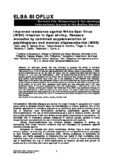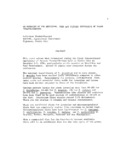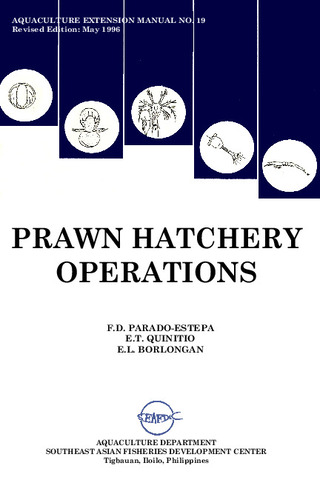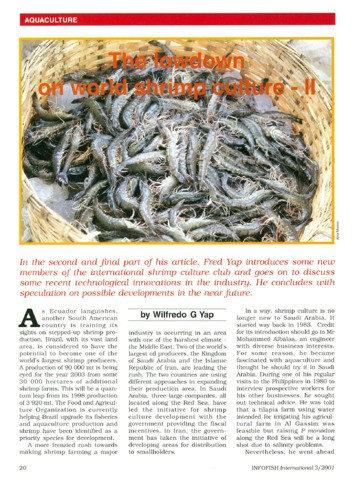Improved resistance against White Spot Virus (WSV) infection in tiger shrimp, Penaeus monodon by combined supplementation of peptidoglycan and mannan oligosaccharide (MOS)

Associated URL
www.elba.bioflux.com.roDate
2014Author
Page views
709Metadata
Show full item record
Share
Abstract
An eight-week feeding trial was conducted to evaluate the effects of combined supplementation of peptidoglycan and mannan oligosaccharide (MOS) in tiger shrimp, Penaeus monodon. Tiger shrimp (0.29 ± 0.02 g) were fed diets supplemented with different levels of peptidoglycan + (MOS) as immunostimulants for six (6) and eight (8) weeks. Four (4) experimental diets were formulated to contain 0, 0.1, 0.2, and 0.4% peptidoglycan + MOS. The feeding trial was conducted in 250 L capacity concrete circular tanks (replicated four (4) times) with 20 shrimp per tank. Growth, survival, respiratory burst activity, total hemocyte count (THC), and in vivo resistance to WSV infection were evaluated. Weight gain of the shrimp was significantly higher in the immunostimulant-fed groups compared to the control. However, different levels of the immunostimulants did not differ in their effect on the the growth of the shrimp. On the other hand, respiratory burst activity and total haemocyte count (THC) were significantly higher in the group supplemented with 0.2% peptidoglycan + MOS than the rest of the treatments. Likewise, survival after infection with White Spot Virus (WSV) was significantly increased in the 0.2% peptidoglycan + MOS compared to the other groups. The present results demonstrated that using peptidoglycan and MOS together at 0.2% of the diet improves growth, activates immune responses such as respiratory burst activity and THC in P. monodon and give better protection to the shrimp against WSV infection.
Suggested Citation
Apines-Amar, M. J. S., Andrino, K. G. S., Amar, E. C., Cadiz, R. E., & Corre, V. L., Jr. (2014). Improved resistance against White Spot Virus (WSV) infection in tiger shrimp, Penaeus monodon by combined supplementation of peptidoglycan and mannan oligosaccharide (MOS). Extreme Life, Biospeology and Astrobiology , 6(1), 1-9. http://hdl.handle.net/10862/2239
Subject
Taxonomic term
Collections
- AQD Journal Articles [1249]
Related items
Showing items related by title, author, creator and subject.
-
An overview of the nutrition, feed and feeding techniques of prawn penaeid/shrimps
Piedad-Pascual, Felicitas (Philippine Council for Aquatic and Marine Research and Development, 1989)This paper echoes what transpired during the first International Conference of Penaeid Prawns/Shrimps held in Iloilo City in December 4-7, 1984, particularly on the Nutrition nd Feed Development. Around 25 papers were ... -
Prawn hatchery operations
Parado-Estepa, Fe D.; Quinitio, Emilia T.; Borlongan, Emeterio L. (Aquaculture Department, Southeast Asian Fisheries Development Center, 1996-05)The manual, an updated version of the 1984 SEAFDEC/AQD manual, presents the underlying principles and step-by-step instructions of prawn larval and post-larval rearing. The techniques described are not only applicable to ... -
The lowdown on world shrimp culture - II
Yap, Wilfredo G. (INFOFISH, 2001)This paper introduces some new members of the international shrimp culture club and goes on to discuss some recent technological innovations in the industry, particularly the polyculture of tilapia (mainly Oreochromis ...



